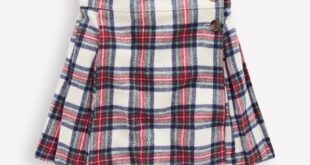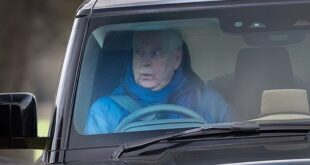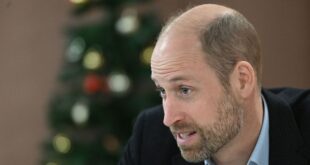THE global coronavirus crisis arrived in Swindon exactly one year ago today when the council confirmed the town’s first case of Covid-19.
The Adver has outlined the entire course of the pandemic so far and how it affected the town. For the full story on each date, click the links in the text below.
MARCH 6: One adult living in Swindon tested positive for Covid-19 after returning from a trip to Northern Italy, which was an early hotspot for the deadly disease, and another case was then confirmed in Swindon two days later.
Our front page coverage of the historic announcement included reassurance that the risk to others remained low and that good hygiene, hand-washing and covering your mouth when you cough would be the best protection against the virus.
At the time, the UK had just 273 confirmed cases and extra safety measures that are now commonplace like social distancing and mask wearing were not yet deemed necessary.
MARCH 19: The grim death toll began when a man in his 80s with an underlying health condition died at Great Western Hospital after testing positive for coronavirus. Since then, 305 more patients with Covid-19 have died at the hospital.
As time ticked on and Covid continued to dominate the headlines, calls for a national lockdown increased, supermarkets urged customers to only buy what they needed amid reports of stockpiling, and upcoming festivals and Wyvern Theatre shows were cancelled.
Schools closed to all pupils except for those of key workers and the vulnerable on the same day and several shops later closed their doors as a precaution.
THROUGHOUT MARCH: Couples were stranded for weeks in Spain after the borders began to close and flights were cancelled but they eventually managed to make their way home.
MARCH 23: The first UK lockdown began following an announcement from the prime minister instructing us to stay home unless we were heading out for daily exercise, providing care or medical help to a vulnerable person, or travelling to and from work.
APRIL: Clapping for NHS staff, carers and other healthcare workers who had been put under immense pressure during the pandemic became a regular weekly event throughout April.
People all over Swindon opened their windows and front doors to cheer, applaud and make as much as noise as possible to show their appreciation.
On one evening, the Adver visited a Blunsdon street where GWH employee Kelly Greensides performed a self-written song which described her experiences consoling virus victims in their dying moments while their loved ones were unable to be by their bedside.

APRIL 8: The life-threatening risks key workers faced on the frontline became devastatingly clear when 62-year-old medic Dr Edmond Adefolu Adedeji died on April 8 after testing positive for coronavirus.
MAY 14: GWH consultant Dr Thaung Htaik died at the age of 65 after testing positive for coronavirus.
On that same day, a pop-up Covid-19 testing site appeared in the County Ground car park and was later superceded by a larger regional testing facility at the Wroughton Park and Ride on MAY 30.
JUNE 15: The town centre filled with eager shoppers who flocked back to the high street. Primark and Sports Direct saw the longest queues, though staff and inSwindon representatives did their best to ensure people stayed safe.
JULY 4: Pubs and restaurants who had survived by switching to takeaway services welcomed punters back indoors after stepping up cleaning regimes and making changes to the way people entered the premises and ordered food and drink.
COMMUNITY SPIRIT DURING LOCKDOWN: Such extreme circumstances provoked an outpouring of community spirit as Swindonians tried to stay positive and did their bit to help the most vulnerable members of society during these troubling times.
Wood Street favourite Biplob delivered dinners to vulnerable and elderly residents in nearby retirement homes and assisted living facilities.
Stratton Juniors FC chairman Magnus Painter, with the help of club secretary Paul Surridge, cooked up many meals for people around the parish and beyond.His coaches and other volunteers dropped off the deliveries while football matches could not go ahead.
Ice cream man Francesco Carchedi of Chez’s Ices attracted a long queue of cars when he parked his van in Bridgemead and County Ground car parks.
He provided a contact-free drive-through service and dished out dessert trays to motorists in need of a sweet pick-me-up.
Charities, engineers, teachers and tech-savvy youngsters made or 3D-printed masks and visors for hospital and care home staff who desperately needed them while corporate giants like Honda donated thousands of pieces of PPE.
The team at Brighter Futures was inundated by requests from people who wanted to brighten the days of medics and patients in some way.

SUMMER 2020: Most of the country saw coronavirus cases fall steadily during the summer, Swindon faced a string of small outbreaks that almost led to the government imposing a local lockdown.
END OF JULY: Within the space of a week, Royal Mail’s delivery office closed for a deep clean after a worker tested positive, coronavirus cases were confirmed in Honda’s South Marston manufacturing plant, three firefighters from Swindon fire station found out they had the virus, and a total of 77 people had tested positive for Covid-19 at the Iceland supermarket distribution depot run by XPO Logistics.
AUGUST 7: Swindon appeared on the government’s pandemic watch list as an ‘area of concern’.
The local authority’s public health boss Steve Maddern tried to reassure the public and encouraged them to follow the guidance but cases continued to rise, including 16 workers at the B&Q depot.
AUGUST 28: The government upgraded Swindon to an area which required ‘enhanced support’, just one category away from following in the footsteps of Leicester and go into local lockdown.
SEPTEMBER 18: Fortunately, the tide began to turn after this, the number of newly-confirmed coronavirus cases began to plummet again and Swindon was taken off the government’s watchlist.
At its summer peak in mid-August, Swindon had 43.7 cases per 100,000 people – the highest case rate among the eight other towns and cities that needed enhanced support.
During the third lockdown, Swindon would a much higher infection rate of over 240 cases per 100,000 people, more than double the summer figures – and even this was far from being the highest infection rate in the UK in 2021.
But let’s not skip too far ahead.
MID-SEPTEMBER: Students returned to Covid-secure classrooms for the first time since the pandemic began after headteachers, governors and school staff transformed the way the school day played out.
For a few weeks in early autumn, coronavirus cases in Swindon dwindled and there were several days where no new deaths of patients with the disease were reported at Great Western Hospital
But entire year groups often had to be sent home when classmates caught coronavirus as small outbreaks popped up in schools around Swindon from late September.
OCTOBER 28: The biggest happened at Wilkes Academy, where eight staff and 134 young people who went to the performing arts school had tested positive for the disease.
Around the same time, five cases were confirmed at Swindon Town Football Club while more workers caught Covid at the Royal Mail depot.

NOVEMBER 2: A second national lockdown began,
NOVEMBER 14: Swindon recorded a daily rise of more than 100 new coronavirus cases for the first time, but sadly not the last.
DECEMBER 3: On the other side of the lockdown, the town entered Tier 2 restrictions which were toughened to Tier 4 levels on DECEMBER 31 following yet another surge in new cases.
DECEMBER 9: Alex Hale, 86, from Shrivenham was the first person in the borough to receive the coronavirus vaccine (Pfizer, if you’re wondering).

JANUARY 1 2021: Despite a quieter-than-normal New Year’s Eve for the police, Wiltshire officers still gave out more than 20 warnings for Covid breaches at illegal parties.
Schools were allowed to reopen for one day in January before the government decided that wasn’t a good idea and began a third lockdown.
JANUARY 13: GWH declared a critical incident due to the high number of coronavirus patients being treated.
The hospital cancelled operations to redeploy staff and create more space for beds to treat 159 people with confirmed or suspected Covid-19.
FEBRUARY 11: Highworth became the first part of the Swindon borough to ‘suppress’ coronavirus cases after fewer than three new cases recorded in one week, though cases later rose slightly again.
FEBRUARY 22: The prime minister outlined a ‘road map’ out of what is hoped to be the last lockdown.



